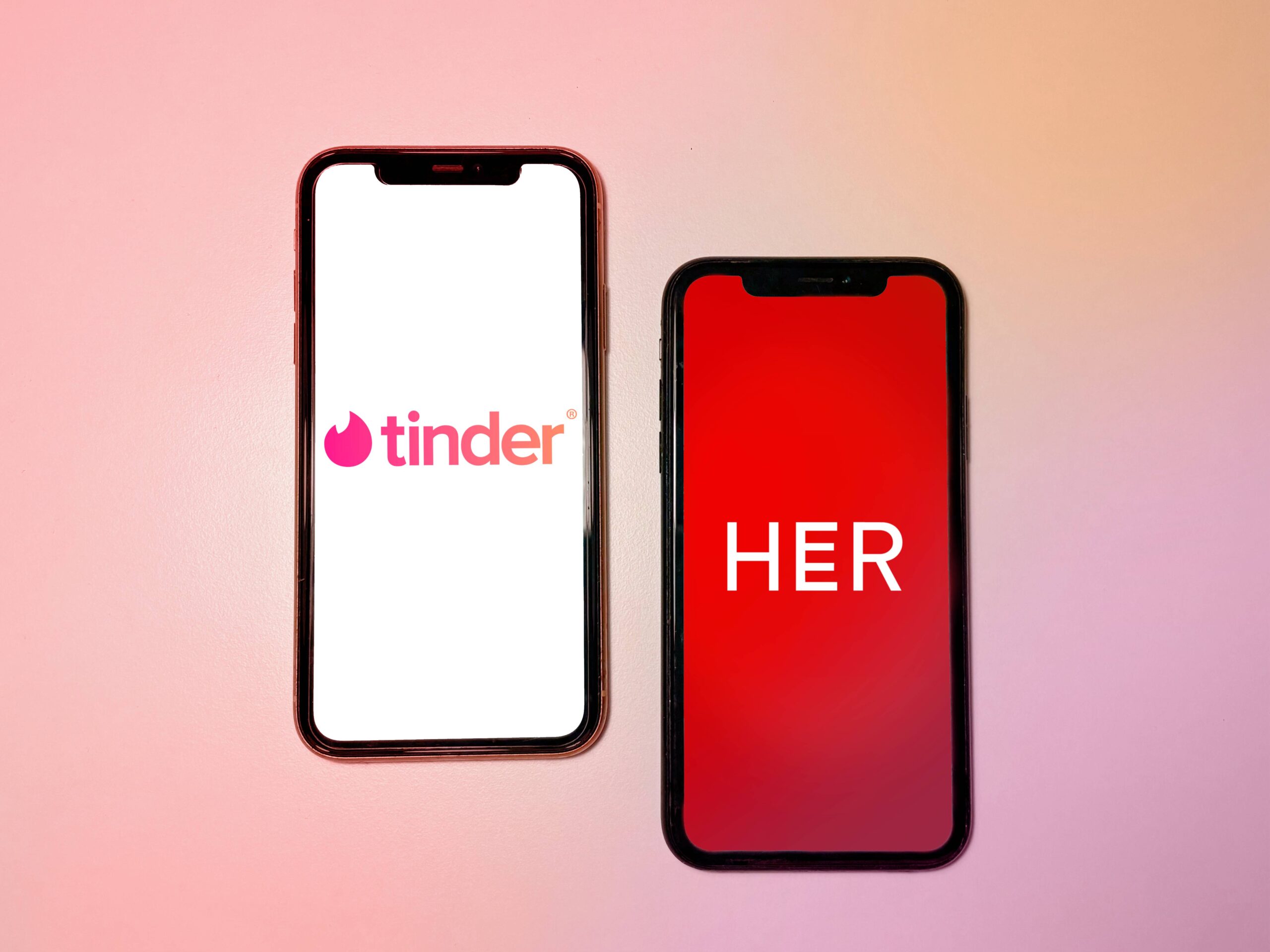The online dating experience for queer people
Do queer people have better luck in the black hole of endless swipes, or are dating apps still built for the heterosexual audience?
In today’s technology-driven world, dating apps are almost a rite of passage for everyone in the market for a significant other. Busy schedules, increased reliance on technology, increased social anxiety—especially after the COVID-19 pandemic, where millions of people had to isolate themselves to survive, many of them without the luxury of living with other people—all push people to the apps.
The moment the pandemic was declared to no longer be a threat, everyone was eager to get back to normal. But the reality is, there is no getting back to what once was. For folks our age, the pandemic years were formative, necessary for building social skills and seeking opportunities.
In my opinion, that is one of the main reasons why our generation is so reliant on dating apps. Coupled with our almost non-existent work-life balance (at least for most of us), dating is something that doesn’t come easily to a lot of people. Take me, for example: I’m a third-year university student with a very hectic work schedule, and it takes all of my time and energy to manage school alongside seeing friends, family, and maintaining my health. Dating is the last thing on my mind. Sure, I want to be in a lovey-dovey relationship with a green flag and do cute things with them as much as the next girl, but the reality is, I don’t have time, and where would I even meet someone like that? A lot of students usually meet their SO in a club, class, or something university-related. Naturally, a lot of people turn to dating apps in hopes of bypassing the mounting inconveniences of post-pandemic modern living.
Now, I’ll admit, I have always been a dating app skeptic. It feels all too performative and artificial for me, slaving away and stressing over perfectly curating a profile in hopes that people will swipe right. Add in limited profile information, and it gets exhausting constantly swiping through profiles in hopes of meeting “the one.” Maybe this is hypocritical of me, but I don’t want my story to be “yeah, I met my partner on a dating app”. I want it to be organic: maybe we bumped into each other in the hallways, or we were partners in a group project. Or maybe we met at a dingy bar playing pool and took a liking to each other. I want my cheesy 2000’s romcom moment.
Difficulties of online dating for queers
Dating is already difficult for straight people, but what if you’re queer? Here’s why it’s harder for queer people like me to jump into the dating scene with confidence and emerge victorious:
- There’s a severe drought of dedicated queer spaces where queer people can be themselves and feel safe in their own skin. While Toronto does boast a reputation as a queer-friendly city, recent shutdowns of queer or lesbian bars such as Lavender Menace and Peaches have forced many to resort to dating apps.
- Online platforms specifically geared towards queer women can be intimidating, not to mention the initial lack of queer dating apps in the first place. There’s a lot of terminology and unwritten etiquette that comes with being on a queer dating app, which works against many queer people questioning their queerness and identity—especially if you’re a baby gay.
There’s a host of other inconveniences and structural barriers that queer people experience on dating apps. As a bisexual woman, I had only used apps like Tinder and Bumble, and even that was more of a game with my friends rather than a serious option to find love. In writing this article, I wanted to personally experiment with apps designed specifically for queer folks and those with a heterosexual audience in mind. So, I downloaded HER—a dating platform specifically designed for 2SLGBTQIA+ women—and Bumble.
My online dating experience: Bumble and HER
Straight off the bat, the app interfaces differed. Bumble’s profile customization options were a bit more surface-level and typical, with the same pre-set prompts like, “We’ll get along if…”, “Two truths and a lie…”, “The quickest way to my heart is…” and the option to add in a couple of pictures. and maybe a link to your Spotify profile. HER’s customization options, on the other hand, had prompts that poked under the surface, with common ones being, “What’s your coming out story?”, “What are you passionate about?”, “What does community mean to you?”. Of course, they had a few fun ones as well, but it seemed to be a good mix of both serious and lighter questions.
Additionally, Bumble’s prompt answers were usually one-liners, whereas HER’s prompt answers were more open-ended and didn’t have much of a limit. When it comes to adding badges, Bumble had the usual ones: something for hobbies (writing/singing, etc), interests, social issues, and then the typical demographic ones (gender/age/job/height, etc). HER seemed to go a step further, by including identity specific badges and stickers, such as masc/femme/pillow princess/chapstick lesbian/lipstick lesbian/butch, etc. I felt this allowed for a more detailed idea of the person and how they identified. Another difference I noticed is that HER seemed more sex-positive, as they offered specific badges that allowed people to add their sex preferences if they felt comfortable.
The next thing I thought differed was the matching policies. On Bumble, when you match with someone, you have 24 hours to start a conversation with them or your match will expire, and women initiate the conversation. Once the initial text has been sent, the other person has 24 hours to respond, or the chat disappears. On HER, you have a bit more of a leeway: you get 3 days to make a move, and once you start a conversation, you get 7 days before it gets archived.
As for actual experience on the apps, I noticed that on HER women seemed to put more effort into trying to showcase their personality on their profile. They included more pictures of themselves engaging in various hobbies and settings. This allowed me to get a glimpse into what kind of person they might be. With Bumble, the men seemed to make less of an effort. They posted less pictures, and some of them would just be pictures of their car or nature landscapes. A lot of them didn’t have any solo photos of themselves, making it a bit difficult at times to figure out whose profile it was.
The men on Bumble also seemed to be more into casual relationships or hook-ups, rather than a serious, long-term relationships. On HER, women seemed more open to building a queer community or for a serious relationship. Though some were looking for casual flings, I noticed that they made that very clear in their profile and didn’t try to lead anyone on. Of course, there were some straight couples looking for a third, but I feel like there’s hardly any dating apps where you won’t encounter some weirdness. On Bumble, there were a lot of men who put on a façade of wanting something serious, when, in reality, they just wanted someone to take home with them—which is completely fine, if they didn’t lie about it!
In terms of the actual conversations I had, I noticed most of the women on HER started off with a genuine compliment and then segued into a conversation that wasn’t just “hi, how was your day, where did you go to school”. I ended up having deeper, more meaningful conversations with the women on HER, and there were very few dry texters. On Bumble, I got a handful of compliments that were more sexual than their initial text, which left me feeling uncomfortable and a bit creeped out. I also encountered a lot more dry texters, with one-word questions and answers, and a lot of abbreviations like “wyd”, “wbu” and “k”. I was more bored texting on Bumble, because talking to some of the men was like pulling teeth, and it got real old real fast.
Creepy people and unsolicited pictures are, sadly, almost a given on all dating apps. On HER, there were a few questionable profiles that made me cover my eyes immediately, but generally, people were normal. When texting my matches on HER, none of them really made me feel unsafe or like I was being disrespected. On Bumble, there were more creeps, and I experienced a lot more nonconsensual objectification than I would’ve liked.
Major takeaways: choose an app that’s designed for your desires
Overall, after almost two weeks on both these apps, I concluded that if you want something casual and easy, Bumble might be for you, although be sure to keep an eye out for creeps. If you are a queer woman who is looking for a potential long-term partner, HER might be a nice place to dip your toes in. Although I am still not a big fan of dating apps and am still holding out hope for a book worthy meet-cute, my experience on HER has made me a little bit more receptive to the idea of dating apps.
I won’t be becoming a dating app enthusiast anytime soon though, that’s for sure. I prefer talking in-person, and feel like that allows you to register a lot of things like body language and tone of voice, which can sometimes get lost in translation when you’re behind a screen. Still, if we go back to the question: are queer and straight dating apps both equally bad? This time around, I would answer, as a bisexual woman, I enjoyed my experience on HER a lot more than I did on Bumble, and based on my observations, I would say that queer dating apps may be a teensy bit better and more genuine than straight dating apps. But this goes both ways: stay cautious when meeting people on dating apps, and be prepared for the worst!

